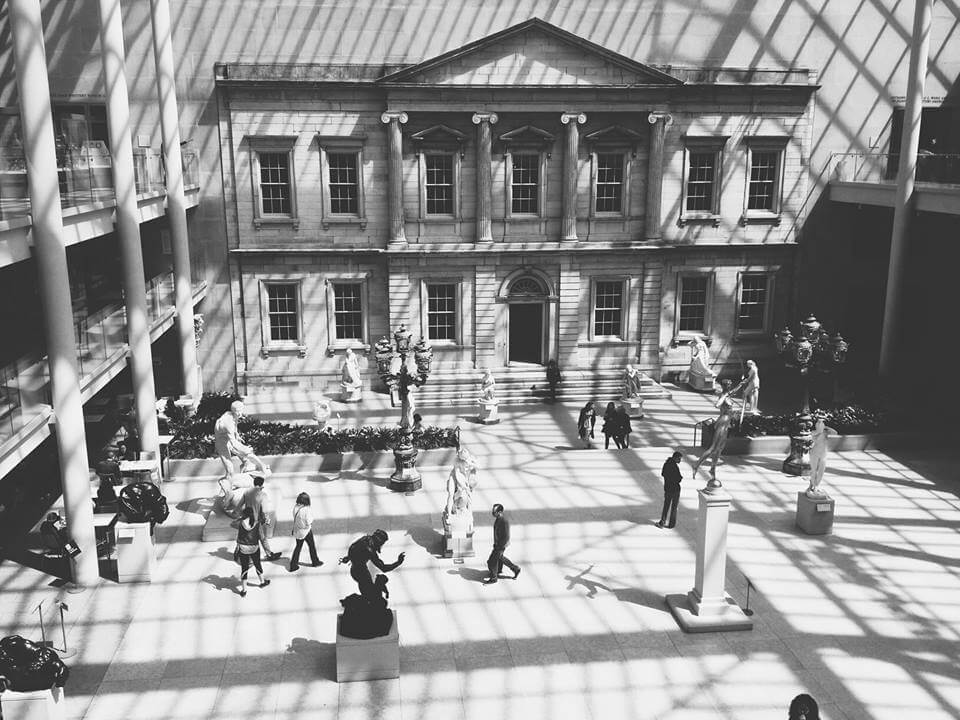Class Trip To A Museum: 9 Tips

1. Give students an assignment on the museum website. Begin planning for the trip early. Many students going on class trips are far more excited to stay at a hotel, eat out at restaurants, or see New York, Los Angeles, Paris, or Rome for the first time. Going to the Getty or the Met or the Louvre might not be much of a draw, truth be told. Give students an assignment that puts them on the museum website for an hour or two. Next week, my sophomores will take a trip to the Met in New York. A month ago, I had them scour the Met website for six paintings they liked.
a. A painting of Christ.
b. A painting of a Biblical saint.
c. A painting of a non-Biblical saint.
d. A landscape.
e. A still life.
f. The gents had to find a painting of a beautiful woman, the ladies had to find a painting of a handsome man.
All the paintings they found had to be on display at the museum. I asked them to print off the paintings and bring them to class. After looking them over, I handed them back and had them cut out the paintings and put them in places where they would see them daily— their lockers, their bathroom mirrors, their wallets, their iPhone wallpaper. I wanted students to remember they were going to the Met, to look forward to it, and to become familiar with small, lousy digital reproductions of the paintings so that they could finally appreciate how very different it is to see a piece of art in person. I want them to notice how the colors are different, the texture is different, how size and distance from the floor change the way a painting is read.
2. Advise them on museum decorum. There will be people at the museum who have waited their entire lives to go, and those people want a dignified mood in which to enjoy things they have looked forward to for so long. A museum is not a place to show off what you know. A museum is not a place to make a stand against Jackson Pollock and loudly joke about what a hack he was. The patrons at the museum are there to see the paintings, not to hear critics perform. If a critic is wanted, the patrons will hire a docent.
3. Take the students on a practice run to small museum first. If you have a small local art museum, take students there before the big trip. Going to a museum is sufficiently challenging that you can use practice. Give students a taste of the mood and atmosphere of an art museum before they go. If possible, don’t teach them about museum decorum in the abstract. Show them.
4. Do not give students a list of paintings to find in the museum. A museum is not a fun house, nor is it a place for a scavenger hunt. I sometimes hear of teachers giving lists of paintings for students to find just to ensure they branch out and see as much as possible. Giving students a list of paintings to see when they arrive at a museum will either fail because it is fun or because it is boring. A museum is not a place for a game, but for contemplation, and contemplation might be enjoyable, but it’s not exactly a kick in the pants. Nothing defeats the purpose of great art quite like giggling coteries of students blasting from room to room looking for accession numbers to write down.
5. Show them how to take pictures of paintings, if they must. I take many, many pictures while in museums. It is a flaw in my character. However, I do my best to take decent pictures. If you are not going to ban the use of cell phone and cameras in a museum, at very least teach students to take decent pictures of what they’re looking at. Absolutely no need exists to get an entire painting, picture frame and all, in the shot. Very fine digital reproductions exist of every painting the student will see in the museum. Shepherd students away from taking pictures merely to prove they were there. Instead, have them take close up shots of details in a painting. Get a close-up of Christ’s feet in a Crucifixion scene, or Mary’s face in a Lamentation scene.
6. Tell them to wear their best clothes. Students will have a better time if they dress nicely for a museum. If you can, them to wear church clothes. If you cannot require it, make fun in advance of any boy who thinks it will be cool to wear shorts and a t-shirt to the museum. A student in dress clothes will have a spiritual posture more capable of receiving beauty.
7. Teach them to move slowly. Do not try to see everything. If you do, you will see nothing. Try to take five minutes on every room you pass through. Choose a wing of the museum that most interests you. If you are not interested in Byzantine iconography, you are not required to spend time in those rooms. If everything after the Enlightenment leaves you cold, focus on the Baroque and the Renaissance. Ask students to give ten minutes of their time to one painting in particular. While preparing for the trip, show them how a painting looks very different after ten minutes than it does after ten seconds. Subjects of the Holy Roman Empire might have walked ten miles to look at a single painting of Christ hung in a church; they did not move quickly from that painting to another. They lingered, they gazed, and the artist made the painting to be enjoyed as such. Looking at a painting for ten seconds is a little bit like looking at a movie for ten seconds. You haven’t exactly seen it.
8. Give them notebooks to write down the names of their favorites. Get back from the trip and compare notes. Have them make top ten lists of their favorite paintings. Make slides. This will give you a valuable way of discussing the museum later.
9. Don’t force it. When you get back to the hotel that night, don’t make everyone share some amazing experience they had at the museum. Give them some time to think about what they have taken in. If the students know there is going to be some special time of sharing later that night, they will waste their time in the museum trying to think of something interesting to say. Come back to everyone in a week. See how their time in the museum has changed them. Don’t force them to make something up.

Joshua Gibbs
Joshua Gibbs teaches online classes at GibbsClassical.com. He is the author of How To Be Unlucky, Something They Will Not Forget, and Blasphemers. His wife is generous and his children are funny.










